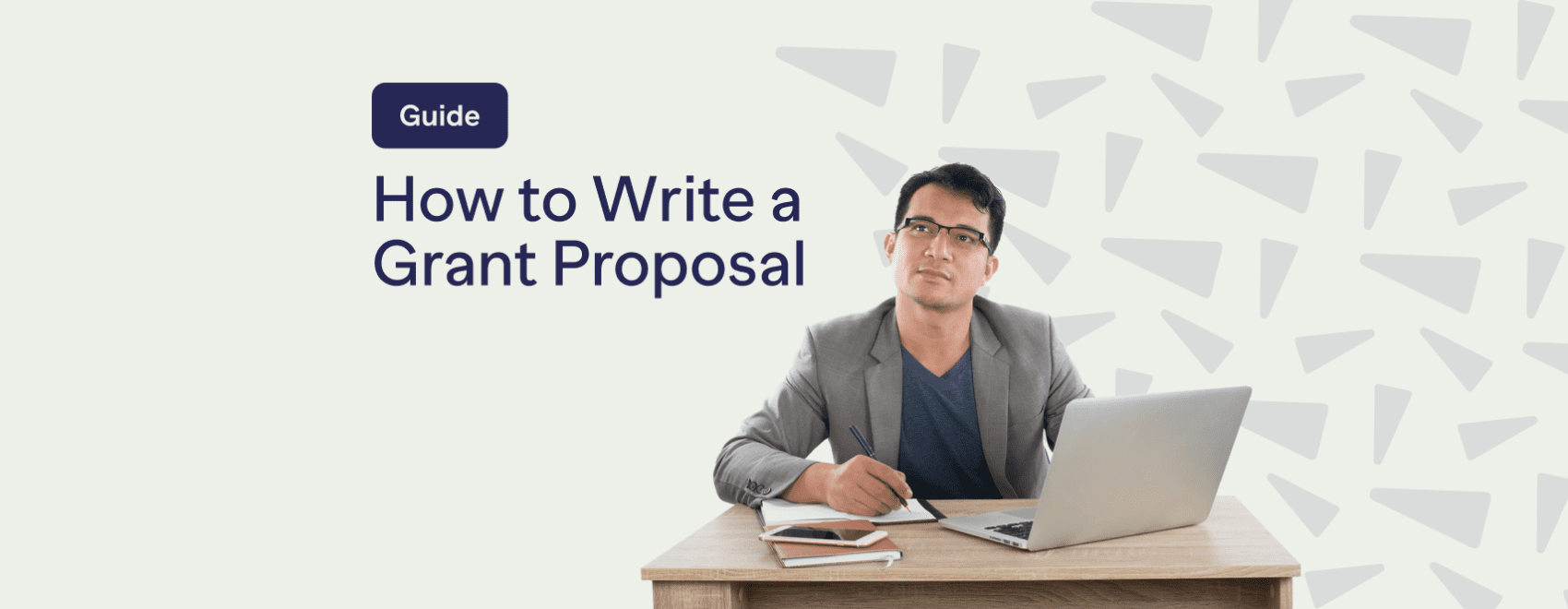For some nonprofit leaders, grant writing seems like a big, scary mystery. Guess what? It’s not.
While grants don’t always have the quickest turnaround time and take some effort to obtain, they’re still a solid source of revenue for your organization. Stats show that, as of 2020, about 20% of nonprofit funding comes from grants. That’s an impressive chunk of change!
So, can your organization get its hands on some grant-based cash? Absolutely! Grant writing is not some arcane art. As we go through the step-by-step process of how to write a grant proposal, you’ll see that applying for grants is totally doable.
Why apply for grants?
Extra revenue is always a good idea. No doubt that nonprofit fundraising and setting up donation pages are already crucial components of your strategy. Having a grant or two in the pipes, however, not only means more cash in the bank but also diversifies your revenue stream so you’re not overly reliant on one funding source.

Additionally, grants look good, period. If your cause can attract big pots of money, the reputation of your nonprofit gets a major boost. Partly because everyone knows that grants are awarded competitively, other donors take your mission more seriously when you land governmental, foundational, or corporate support. Plus, it has a snowball effect: once you’re awarded one grant, it’s easier to get more down the road.
Do you need a grant writer?
You can hire a professional grant writer who will do all the research, applying, and writing for you. If you intend to compose grant proposals on a regular basis and there aren’t enough hours in the day, then sure, go ahead and bring a professional on board.
The truth? You can do it yourself.

It’s kind of like a leaky faucet: you can call a repair service, or you can tinker with it. The DIY approach might take longer, and nobody said it was easy, but it’s free. And hey, now you have a new marketable skill!
How to Write a Grant Proposal in 4 Totally Doable Steps
Step #1: Research.
It all starts with scoping out prospective grant-giving organizations to approach. A good place to start is grants.gov. Remember that big corporations like Walmart also regularly award grants to certified nonprofits, and charitable organizations like Open Philanthropy have a rolling list of grant offerings.
Step #2: Research some more.
When you have a shortlist of prospects, you’re ready for more research. Learn everything you can about your potential donor. A common mistake nonprofits make is contacting the wrong organization. This might sound obvious, but you can make this a lot easier on yourself by making sure early on that your prospect’s mission aligns with yours: if you want to fund a new library wing, don’t bother contacting environmental organizations.
Check what projects your prospect has funded in the past. If they’re similar to yours, that’s a good sign. Check the submission deadline and all the fine print about eligibility criteria to make sure you qualify.
Step #3: Get in touch.
Figure out the donor’s preferred means of communication and contact them via phone, email, snail mail, conference call, whatever. While it may sound daunting, it’s perfectly common to get in touch with donors before sending a proposal. It’s all part of gathering background data and trust us, it saves everyone a ton of time in the long run.
Once you have their attention, tell them about your nonprofit and ask if your proposal is welcome. Have a brief pitch ready. Be clear about your mission and why it matters. You should be able to rattle off relevant data, facts, and stats at a moment’s notice.

Step #4: Write the thing.
There are plenty of grant proposal samples out there, but they all follow a general pattern.
In the end, it’s all about clarity, data, and impact. Be clear about what you do and what you’re asking, have the data to back up your claims, and be prepared to demonstrate your program’s impact. That’s it.
Here are the essential components of a successful grant proposal.
1. Cover letter
This is your proposal’s first impression, so make it count. Remember one thing: grant-makers are busy people and they read through hundreds of proposals a day. Make it easy on them by concisely delivering a strong case, with the emphasis on “concisely.”
Explain what your nonprofit does and why it’s a big deal. Back it up with a few key facts and stats. You don’t need to list every single thing your organization has ever done; your letter will be stronger if it’s succinct and doesn’t ramble.
Address the specific program, activity, or project that the grant will be used for, and why your organization is the right one for the job.
Remember that conversation you should have initiated in step three? Now is the time to mention it—briefly!—because it shows that you’ve done your homework and have already gotten the green light to send your proposal. It needs a light touch, something like, “During our initial conversation, Mr. Smith mentioned that our ongoing work with the porcupine population aligns with your philanthropic goals.”
2. Executive Summary
Summarize your proposal in a few sentences. Say what you do, what your proposed program will do, and how the grant funds will be allocated. Close by describing how your organization will evaluate the program’s success.
3. Introduction to your organization
This is where you get to go into a little more depth about your nonprofit’s mission. Describe your work, your fundraising efforts, your impact to date, and your engagement trends. Try to stick to one paragraph.
4. Statement of Need
This is the most important part of your proposal since it’s all about the specific program that the grant will fund and why this program is necessary. This part shouldn’t be longer than a couple of paragraphs
.
- First, outline the problem, why it concerns you, and how your proposed program will address it. You’re the expert here, so guide your reader with confidence.
- Next, explain why your nonprofit is uniquely suited to address the problem. Have you organized similar projects in the past? Do you have a team of experts who have the know-how to implement a solution? Sell yourself and remember to be brief.
- Strike the right tone. While there should be a touch of pathos, your argument is ultimately strongest when it relies on facts and data. Even if you feel very passionately about the project you’re proposing, write in a restrained and objective way to come across as a tough-minded professional.
5. Program Plan
This section is for the nitty-gritty of your proposed activity or project. Whatever the aim of your program, your donor needs a crystal-clear picture of the exact steps your nonprofit will take to accomplish your goals. Describe who will do what and when. Include a timeline.
6. Budget
Provide a detailed cost breakdown for all the expenses your project will incur, ideally in spreadsheet form. Don’t forget to include any other funding sources you intend to apply.
7. Evaluation
In the concluding section of your proposal, explain how your organization will measure the success of the program.
For example, if you’re applying for a grant to build a new animal shelter to house the stray cats in your community, success will be measured when there are X fewer stray cats running around. If possible, use facts and data here, not conjecture.
8. Additional Info
Include an appendix with relevant paperwork, such as evidence of your nonprofit’s tax exempt status, letters of support from community leaders, and any relevant tables or reports.
9. Edit and Re-edit
Make sure to give yourself plenty of time to proofread your proposal. Revisions take time—it’s almost impossible to catch tiny mistakes when you’re staring at the same document day after day.
Proofread your proposal very carefully, then set it aside for a couple of days, and come back to it with fresh eyes. Ask someone else to read through it to catch little errors, typos, or weird phrasing. Double-check deadlines and make sure one last time that you followed all the grant-maker’s instructions.
From Grants to Fundraisers, Start Planning Your Next Big Step
Wherever you are in your grant application journey, RallyUp is here to help your nonprofit aim higher.
We believe in your cause, and our platform has the features and functionality to help you plan, promote, and organize the best fundraising experiences for your donors—for free! With step-by-step guides and smart solutions for both in-person and virtual fundraising events, RallyUp lets your nonprofit stay on mission while reaching as many supporters as possible.
